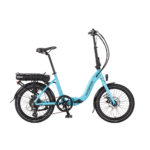Totally conflicted now
Don’t know what to do this the reply from the chap that has looked at it
please understand nothing has ever been touched on the bike from new
Apart from the pedal censer
this was is reply after showing him the feedback I got from you guys
you can't wire it in an incorrect way. if it's not this box, it's the motor and you can forget the bike.
You can't wire it the wrong way yourself, but you can buy one that's wired the wrong way. Maybe find another clever mate, who's prepared to listen and do valid tests.
Here's how you test an ebike:
1. Measure the voltage at controller's battery connector. Obviously should be battery voltage. 36v - 42v for a 36v battery would be an acceptable range, but if you've fully charged the battery and it's less than 41v, it needs some sorting.
2. Measure the voltage on the 5v rail. You can measure that between any ground (black) and any of the reds going to the PAS or motor halls. It should be around 5v. In your case, probe the three pins on the PAS connector to see which one is 5v - if any.
3. You don't need to do this one unless you have a throttle. Check throttle signal wire voltage on it's connector while connected. it's the wire that's not red or black on the throttle connector. Should give about 1v to 4v when you twist the throttle. If there's more than one wire, your meter will find it. It's the one that's between 1v and 4v, assuming that it works.
4. Check that the pedal assist sensor is pulsing. Measure the PAS signal wire while turning the pedals slowly. Should pulse 5v on and off every time a magnet passes the sensor. The signal wire is the one that's not red or black. This test is very tricky when you have moulded connector. Best is to take the controller out of its aluminium case and test where the wire is soldered to the PCB.
5. Check the motor hall signal wires (blue green and yellow) on the motor connector at the controller. They should each pulse with 5v going on and off as you rotate the wheel
BACKWARDS. Again, difficult to do if you have moulded connectors. You need to show what you have.
6. Mosfet test. Disconnect the motor cable and battery from the controller. Measure the resistance (200k scale) between the red battery connection and each of the three phase wire connections, then repeat with the black battery wire. Each set of 3 readings should be the same as each other and in the range 7K -24K. Though can be higher as long as they're all the same. Due to the capacitor across the battery wire, you can get a constantantly changing measurement while it charges. In that case, try swapping your probes round. Even though can be a moving result, the only important thing is that all three move in a similar way.













